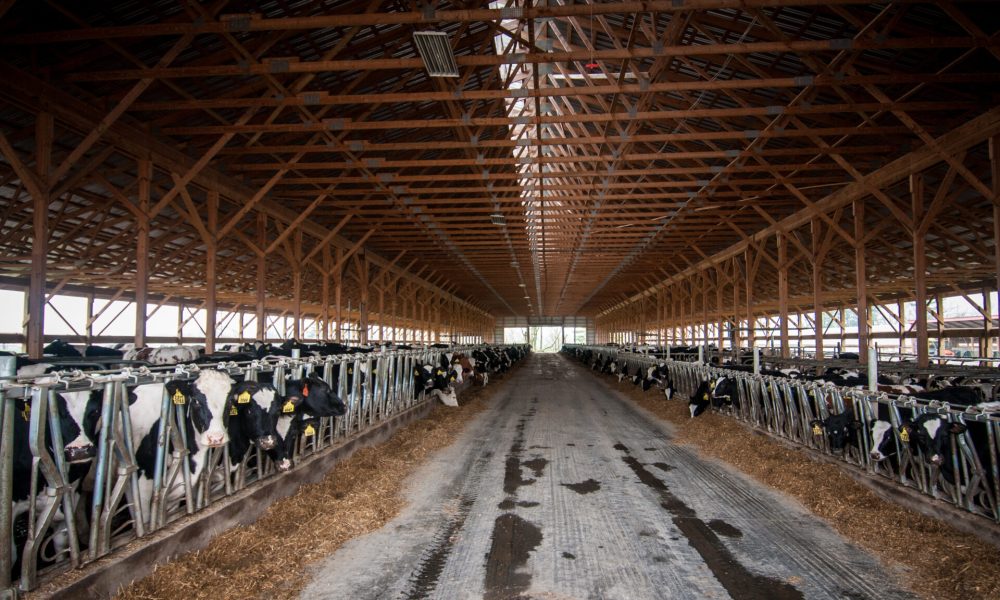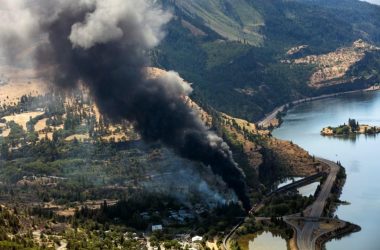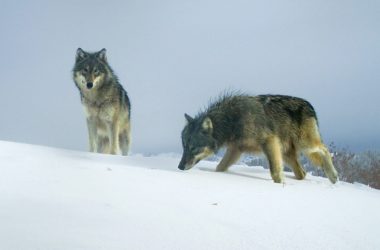Dairies with thousands of cows won’t face regulations for air pollution for now, the Oregon Environmental Quality Commission decided.
The five governor-appointed commissioners made the ruling Wednesday in response to an August petition filed by two-dozen environmental, animal welfare and social justice groups that asked the state to regulate harmful emissions from dairies with 700 or more cows. Each year, cows at these dairies produce tons of manure and urine containing ammonia gas, which is harmful to breathe and can cause burning in the eyes, nose and throat and lead to long-term respiratory issues.
The decision followed a recommendation from the Department of Environmental Quality that the group wait to see if the federal Environmental Protection Agency releases guidelines for monitoring and regulating air pollution from industrial dairies. The agency has been working toward such a regulatory program for at least the last 15 years.
At the commission’s meeting, DEQ interim director Leah Feldon said her agency lacked funding to create such a program. She said it would need to work with the Oregon Department of Agriculture to create one and that they would need to gather more information about the impact of emissions on communities closest to the state’s largest dairies.
Commission Chair Kathleen George requested DEQ staff return within a year with more data about the impacts of these emissions.
There was some disagreement during the meeting. Commissioner Amy Schlusser said she was concerned the state wasn’t doing enough.
“I don’t think that a lack of information itself justifies a lack of action when the risks and potential risks are this well understood,” she said.
One of the petitioners asking the state to regulate dairy CAFO emissions, attorney Emily Miller of the nonprofit environmental group Food and Water Watch, told the commissioners it would be difficult to explain to people in Morrow County, home to the state’s largest dairies, that state agencies and leaders wouldn’t protect them.
“They report high rates of asthma and other respiratory problems not only amongst the dairy workers themselves, but also their children and their families. In short, this air pollution poses a serious threat to public health and it is past time for this commission to address it,” she said.
Miller said any attempt to regulate emissions from large dairies is now up to the Oregon Legislature.
Environmentalists have pushed state lawmakers to put a moratorium on new confined animal feeding operations, or CAFOs, of all types, which they consider to be harmful to the environment and cruel to animals.
The number of cows in Oregon has more than tripled during the last 30 years, and the number of farms with 1,000 or more cows has, too, according to a Food and Water Watch analysis. In 1997, Oregon had eight dairies with more than 1,000 cows. Today, there are nearly nine times that. One of the largest, Threemile Canyon in Morrow County, has 70,000 cows.
Commissioner Greg Addington, who is taking over as executive director of the Oregon Farm Bureau in a few weeks, said there wasn’t enough information to suggest regulating dairies was the best way to tackle air quality issues. The bureau represents 6,700 farmers including some who own large dairies.
“I’ve just been wondering, like bang for the buck, does this do us the most good from an air quality perspective,” he said, acknowledging the environmental quality department’s limited budget.
Addington said a 700 cow operation is not industrial but a normal size for a modern family dairy in Oregon.
The Environmental Protection Agency characterizes 700 or more cows as a large operation.
This latest petition is the third time in 15 years that advocates have called for regulating dairy air emissions in Oregon.
In 2007, the state Legislature created a Dairy Air Quality Task Force made up of local and state officials, scientists, public health professionals, environmental groups and the dairy industry.
They studied dairy emissions and the effects of methane, ammonia and small particles in the air from animals and manure, and strongly recommended the state create a dairy air-emissions program, but legislation was never proposed.
In 2017, another attempt at regulation failed when a bill to create a permit program for dairy air pollution died in the Senate.
Oregon Capital Chronicle is part of States Newsroom, a network of news bureaus supported by grants and a coalition of donors as a 501c(3) public charity. Oregon Capital Chronicle maintains editorial independence. Contact Editor Lynne Terry for questions: [email protected]. Follow Oregon Capital Chronicle on Facebook and Twitter.
STORY TIP OR IDEA? Send an email to Salem Reporter’s news team: [email protected].

Alex Baumhardt has been a national radio producer focusing on education for American Public Media since 2017. She has reported from the Arctic to the Antarctic for national and international media, and from Minnesota and Oregon for The Washington Post. She previously worked in Iceland and Qatar and was a Fulbright scholar in Spain where she earned a master's degree in digital media. She's been a kayaking guide in Alaska, farmed on four continents and worked the night shift at several bakeries to support her reporting along the way.









